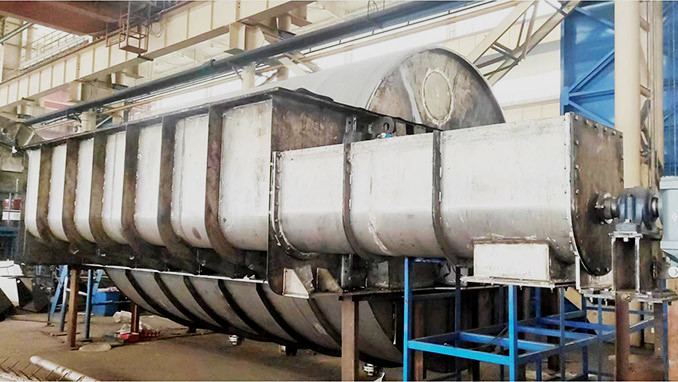Unlocking Efficiency: Understanding Pulp Machinery in the Paper Processing Industry

Pulp machinery is the backbone of the paper manufacturing process, responsible for converting wood chips and other raw materials into pulp. Understanding the various types of pulp machinery and their functions is essential for professionals in the manufacturing sector, especially those focused on paper processing.
One of the key components of pulp machinery is the pulper. This machine is designed to break down raw materials into a slurry, allowing for efficient extraction of cellulose fibers. Various types of pulpers, such as drum pulpers and hydrapulpers, are available, each tailored for specific applications and raw material types. Selecting the right pulper can significantly enhance the efficiency of the entire production process.
Another critical aspect of pulp machinery is the screening equipment, which removes contaminants and ensures the purity of the pulp. Proper screening is vital for producing high-quality paper products, as impurities can lead to defects and reduced strength in the final product. Understanding the different screening technologies—such as pressure screens and vibratory screens—can help manufacturers choose the best option for their specific needs.
Bleaching is another crucial stage in the pulp production process, requiring specialized machinery to achieve the desired whiteness and brightness of the pulp. The selection of bleaching technology, such as chlorine dioxide or hydrogen peroxide methods, impacts both environmental compliance and the quality of the final product. Manufacturers must stay updated on advancements in bleaching technologies to optimize their processes and meet market demands.
In addition to individual components, it is important to consider the automation and control systems integrated into pulp machinery. Advancements in Industry 4.0 have led to the incorporation of smart technology that enhances monitoring and control over pulp production processes. Implementing these technologies can lead to improved operational efficiency, real-time data analytics, and predictive maintenance, significantly reducing downtime and operational costs.
Furthermore, sustainability practices are becoming increasingly important in the manufacturing sector. Pulp machinery can be designed to minimize energy consumption and water usage, aligning with eco-friendly manufacturing practices. Companies that prioritize sustainability not only contribute to environmental preservation but also appeal to a growing market of environmentally conscious consumers.
In conclusion, understanding pulp machinery is essential for professionals in the paper processing industry. By staying informed about different types of machinery, their functions, and advancements in technology, manufacturers can optimize their production processes, ensure quality, and maintain a competitive edge in the market. Embracing innovation and sustainability will be key to thriving in this dynamic industry.
One of the key components of pulp machinery is the pulper. This machine is designed to break down raw materials into a slurry, allowing for efficient extraction of cellulose fibers. Various types of pulpers, such as drum pulpers and hydrapulpers, are available, each tailored for specific applications and raw material types. Selecting the right pulper can significantly enhance the efficiency of the entire production process.
Another critical aspect of pulp machinery is the screening equipment, which removes contaminants and ensures the purity of the pulp. Proper screening is vital for producing high-quality paper products, as impurities can lead to defects and reduced strength in the final product. Understanding the different screening technologies—such as pressure screens and vibratory screens—can help manufacturers choose the best option for their specific needs.
Bleaching is another crucial stage in the pulp production process, requiring specialized machinery to achieve the desired whiteness and brightness of the pulp. The selection of bleaching technology, such as chlorine dioxide or hydrogen peroxide methods, impacts both environmental compliance and the quality of the final product. Manufacturers must stay updated on advancements in bleaching technologies to optimize their processes and meet market demands.
In addition to individual components, it is important to consider the automation and control systems integrated into pulp machinery. Advancements in Industry 4.0 have led to the incorporation of smart technology that enhances monitoring and control over pulp production processes. Implementing these technologies can lead to improved operational efficiency, real-time data analytics, and predictive maintenance, significantly reducing downtime and operational costs.
Furthermore, sustainability practices are becoming increasingly important in the manufacturing sector. Pulp machinery can be designed to minimize energy consumption and water usage, aligning with eco-friendly manufacturing practices. Companies that prioritize sustainability not only contribute to environmental preservation but also appeal to a growing market of environmentally conscious consumers.
In conclusion, understanding pulp machinery is essential for professionals in the paper processing industry. By staying informed about different types of machinery, their functions, and advancements in technology, manufacturers can optimize their production processes, ensure quality, and maintain a competitive edge in the market. Embracing innovation and sustainability will be key to thriving in this dynamic industry.


评论
发表评论